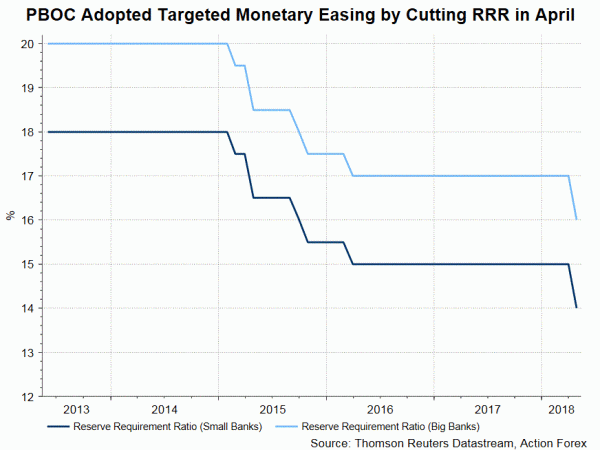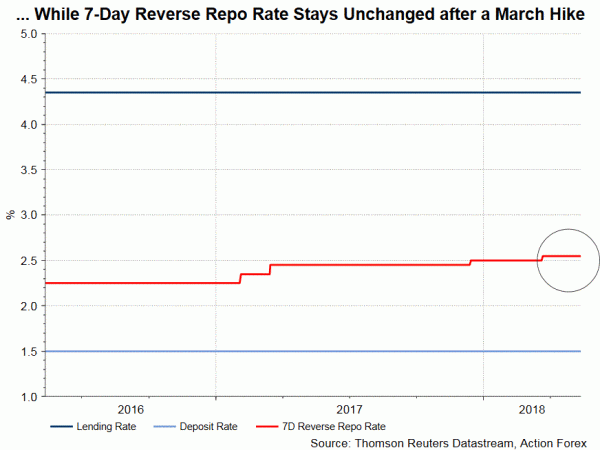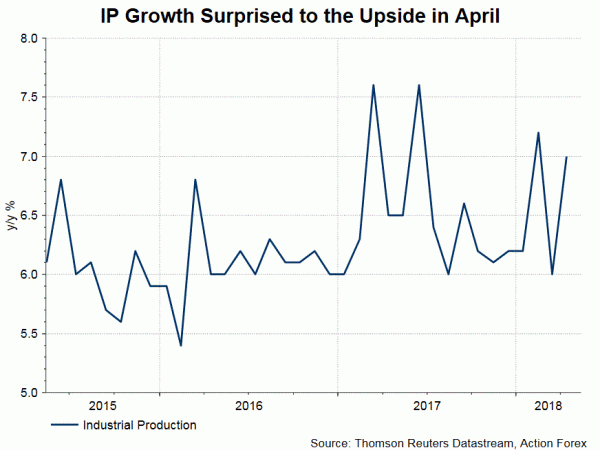China’s macroeconomic data was mixed in April. Industrial production (IP) expanded +7% y/y, accelerating form +6% in March and consensus of +6.4%. Retail sales grew +9.4% y/y, easing from +10.1% in March. The market had anticipated a milder drop to +10%. Urban fixed-asset investment (FAI) increased +7% in the first four months of the year, compared with a +7.5% growth in the first three months. The market had anticipated a growth of +7.4%. Essentially, the reports mark the first set of data this year that’s unaffected by Lunar New Year. Presumably reflecting the underlying trend of the world’s second largest economy, the dataflow confirms that China is undergoing cyclical economic slowdown. Assessing the economic backdrop since the beginning of the year, we believe the authority has tilted its focus of monetary stance to growth stability from deleveraging.
The positive surprise from IP growth was in contrast with the official PMI. Recall that China’s manufacturing PMI eased to 51.4 in April, from 51.5 a month ago. The moderation was driven by slowdown in foreign demand, as well as the aftermath of the rapid easing in credit growth in the first quarter. Trade-related indices fell across the board, with the “new export orders” index slipping to 50.7 from 51.3 in March and “import” index plunging -1.1 points to 50.2. Falling for 5 months in a row, the “input prices” index was down -0.4 point to 53. Separately, the Caixin/ Markit PMI, which focuses on small and mid-size businesses, came in at 51.1 for April, up slightly from 51 in March. Moderation in IP growth is expected in coming months as US-China trade tensions have roiled the sentiment.
Retail sales growth retreated to 9.4%, from the three-month high in March, as increase in property-related consumption eased. The ongoing downtrend in FAI growth has been a result of the government’s targeted tightening measures. Weaker growth infrastructure investment (+7.6%, +8.3% in 1Q18) was partially offset by a recovery in manufacturing investment (+4.8%). The latter would likely continue to improve as supported by strong industrial profits and the government’s support on high-tech sectors.
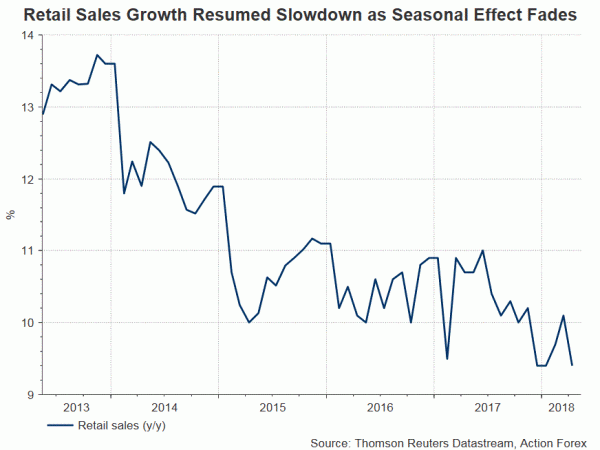
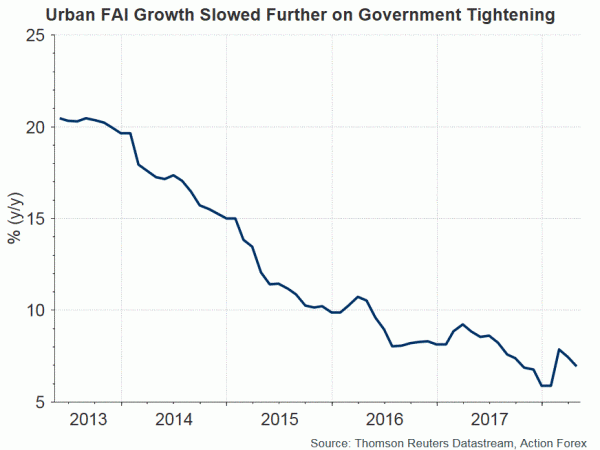
April’s data indicate that investment in China has moderated faster than expected, while challenges on trade have posed downside risks on external demand. As such, the government should continue to emphasize the stance of “persistently boosting domestic demand” and “more hard work” to achieve the GDP growth target of “about 6.5%”.
PBOC’s Shift in Priority
In the first quarter Monetary Policy Report released last week, PBOC stressed effective balance between economic growth stability, structural adjustment, and systematic risk prevention. Meanwhile, although the “neutral and prudent” stance on monetary policy remains in place, the emphasis on “deleverage” is diminished. In a special column about “the change in China’s macro leverage rate”, the central bank acknowledged that the macro leverage ratio increased +2.7 percentage points to 250.3% in 2017, markedly lower than the average increase of +13.5 percentage points during 2012-16. PBOC judged that the slowdown in the macro leverage ratio was driven by the “expansion of supply-side structural reform, a firmer economy and the effective implementation of a prudent, neutral monetary policy. This signaled the authority’s achievement in controlling leverage in the financial sector. PBOC added that “the economic transition from high-speed expansion to high-quality development requires higher utilization ratios of debt capital, which will help prompt a downturn in leverage ratios”. Moreover, it noted that “stronger financial regulation and improved financial markets will curb shadow banking-driven leverage growth”. We believe the language paves the way for a skew of the monetary policy stance to growth stability from deleverage. That is, rather than monetary tightening, would be a more important tool in stemming and preventing risks in coming quarters.
